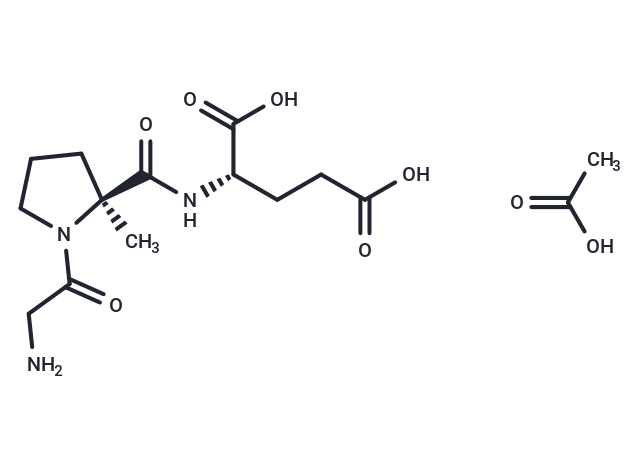Trofinetide, derived from the neuroprotective tripeptide Gly-Pro-Glu (an N-terminal sequence of insulin-like growth factor-1, IGF-1), shows promise in various neuroprotective models. At a concentration of 10 nM, it mitigates cell death in primary rat embryonic striatal neurons caused by okadaic acid. Additionally, Trofinetide reduces the expression of pro-inflammatory markers (IL-1beta, TNF-alpha, IL-6, and E-selectin) in a rat model simulating neuroinflammation from penetrating ballistic-like brain injuries. In cases of brain injury induced by middle cerebral artery occlusion (MCAO), administration of Trofinetide at 30 and 60 mg/kg reduces the area of cortical and striatal infarct. Furthermore, a daily dose of 100 mg/kg reverses social recognition and contextual fear conditioning deficits, diminishes the number of dendritic spines, and decreases testicular weight gain in an fmr1-/- knockout mouse model of fragile X syndrome. Trofinetide formulations have been employed in treating Rett syndrome, highlighting its versatility across various neurological conditions.


